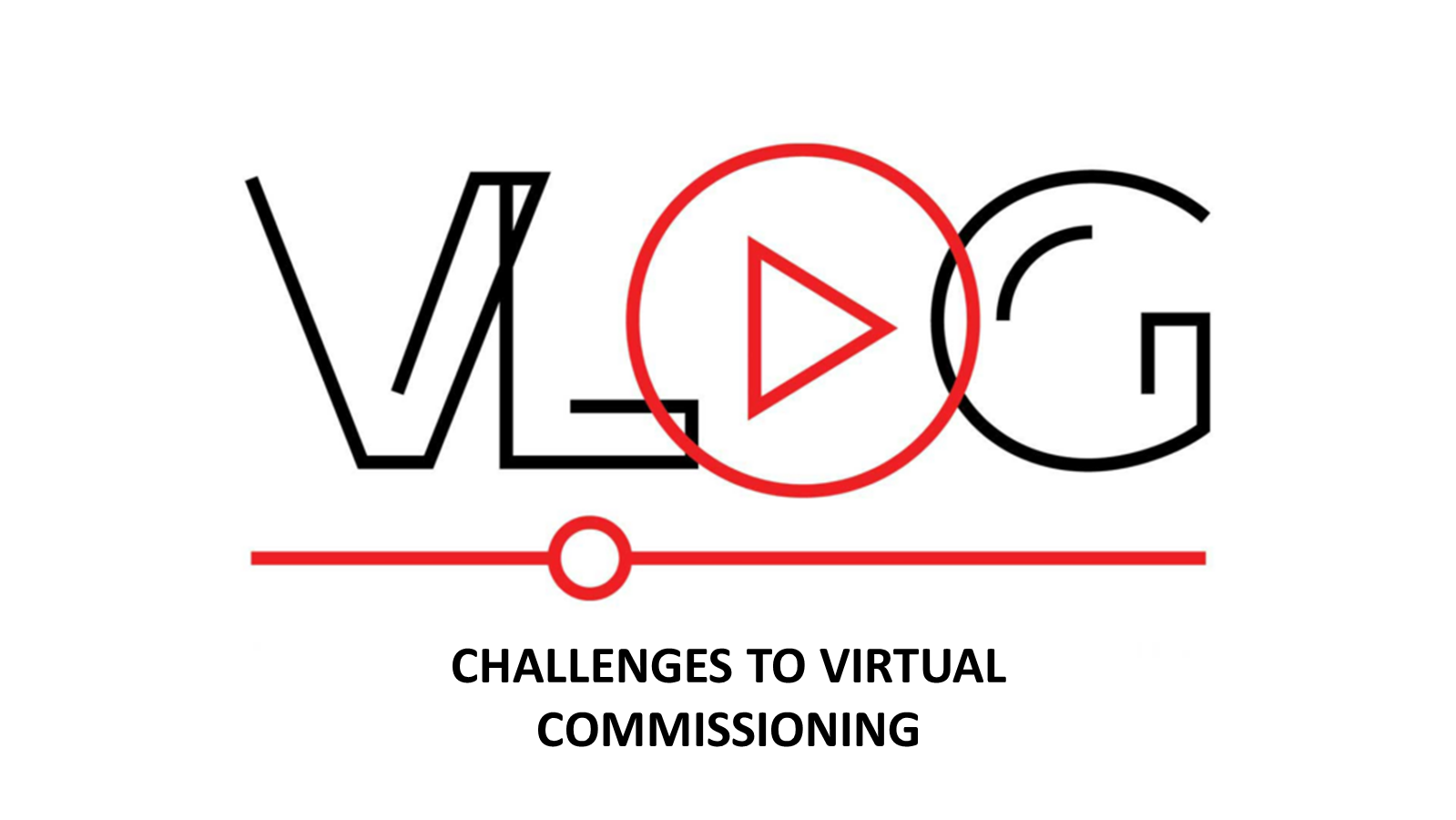
What are some of the biggest challenges to virtual commissioning? Let’s talk about that next.
Okay, so what are some of the biggest challenges when you go to deploy a virtual commissioning type of initiative? Now before we dive in we should make sure that we get a baseline and make sure we’re on the same page. Virtual commissioning is this concept where you use digital simulations alongside physical controllers. You get the logic on the controller, you connect it to the simulation, and you do testing with that to verify that the logic on the controller operates as you intended. That way when you go to physically install and physically commission a production system, you don’t have to debug it there. You minimize the downtime for the production system, get it installed, and you’re up and running.
So when we talk about the challenges to virtual commissioning, there are really three big ones that we’re going to walk through.
Challenge #1 – Executive Buy-In and ROI
One big challenge lies in executive buy-in and ROI. You know what’s funny, is when we conduct survey-based research, almost across every initiative this is one of the biggest challenges. This is because communicating and understanding the value of any initiative is difficult but in this case, it’s not that hard. The idea here is if you go to physically commission a production system, you can run into all sorts of errors, and it takes time to debug that. Costs are both in the amount of time you have to pay people as well as the number of days that a facility or plant is down. This corresponds to the amount of product it would have been producing, or services it would have been producing if it had gone up faster. So, the ROI equation here is actually pretty simple and pretty straightforward. You’ve just got to believe in in the value proposition and what it can deliver.
So, listen – I know this is not easy. It’s not easy to go to an executive and promise, “Hey, if we make this investment we’re going to see this type of return.” However there are a lot of case studies out there where manufacturers have documented the ROI that they’ve realized from this kind of effort. So, it’s best to rely and reuse those as real world examples of the benefits that you get from virtual commissioning.
Challenge #2 – Culture Change & Upgrading Skills
Another of the challenges to virtual commissioning is that of upgrading individual skill sets. With any initiative, there’s going to be changes to processes, as well as the roles and responsibilities that are going to be executing it. That means the people that are actually executing the process – in this case it’s installing and commissioning production cells, lines, systems, and entire facilities – are going to need training. You’re going to need to reinforce the new way – the new approach that they need to be taking while doing things.
But also, it’s just as important to have expert-level champions – people that others can use to rely on. These experts are important when employees get to a point where they’re not sure what exactly they’re supposed to be doing, or how to resolve a challenge that they ran into in the midst of this new process. That’s another challenge.
If you’ve been around initiatives like this before – maybe not just virtual commissioning – any kind of tech led initiative, it always requires more than just installing software. Enabling technology is an important piece of it, but you have to upgrade the skills of the people that actually are going to be implementing the change. You need to teach those that are going to be changing what they’ve been doing on a day-to-day basis – that is absolutely critical. Having a champion is important. It’s about not only making them available, but carving out time where they can help and assist and they don’t have a whole lot of other responsibilities. Some part of their week should be dedicated to helping others. That’s crucial – especially when the new processes are being used for the first time when they’re under strain.
With any technology-led initiative, frankly, the one of the biggest challenges is always going to be around culture change, and this speaks to that directly.
Challenge #3 – Controlling the Scope
One other challenge – and this one is a doozy – is controlling the scope of the initiative. I’ve seen so many companies get very ambitious very quickly. They want to make huge steps, and why wouldn’t you? I mean, a lot of these initiatives hold a lot of promise and you want to get there as soon as you can. However, if you try to go too fast, or bite off more than you can chew, it can disrupt what you’re already doing.
You’ve got to be careful. You’ve got to be able to keep it in scope, narrow it down and do something, and get value from that effort. And then, you can expand it after you have success, and on and on from there until you realize the full vision. This is a really hard part of taking VC on board. Not just for you individually, if you’re leading one of these efforts, but a lot of times you might have an executive come to you and say, “You’ve got three weeks. Get it done.” Yet, that really might not be feasible. It’s important to set correct expectations around delivery of this kind of effort, as well as the ROI. It’s super important that you contain scope, especially early on, and do something that is reasonable, feasible, and where you can get ROI.
So those are the three big areas or big challenges you need to think about when you look at virtual commissioning. One is executive buy-in and ROI. The next one is enabling users with the right training and support champions, which is about culture change. The third is about controlling the scope, and not getting too ambitious and reaching too far in the first project. That’s it! Take care, and talk soon.






